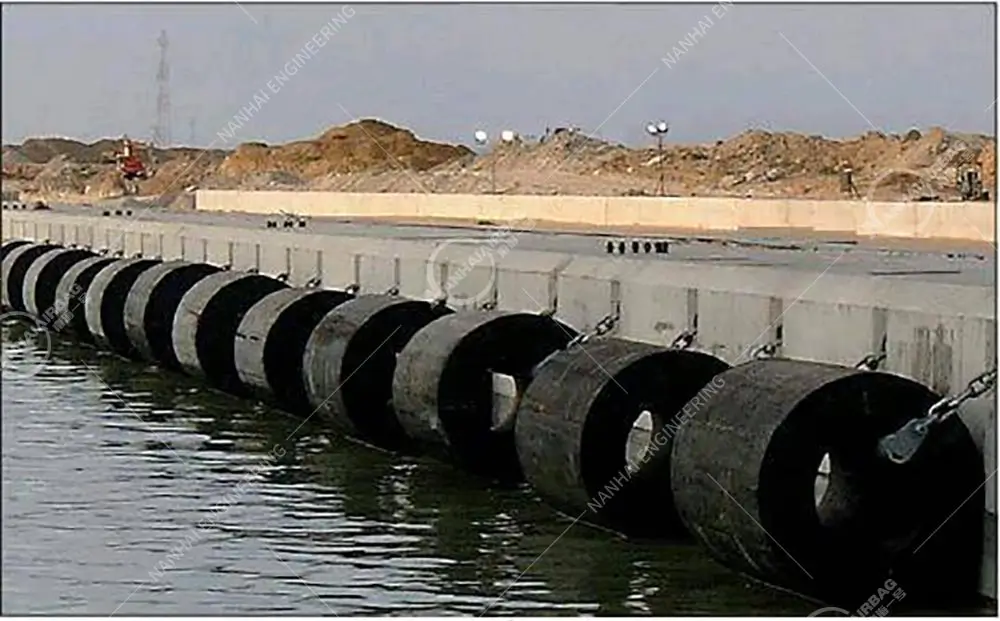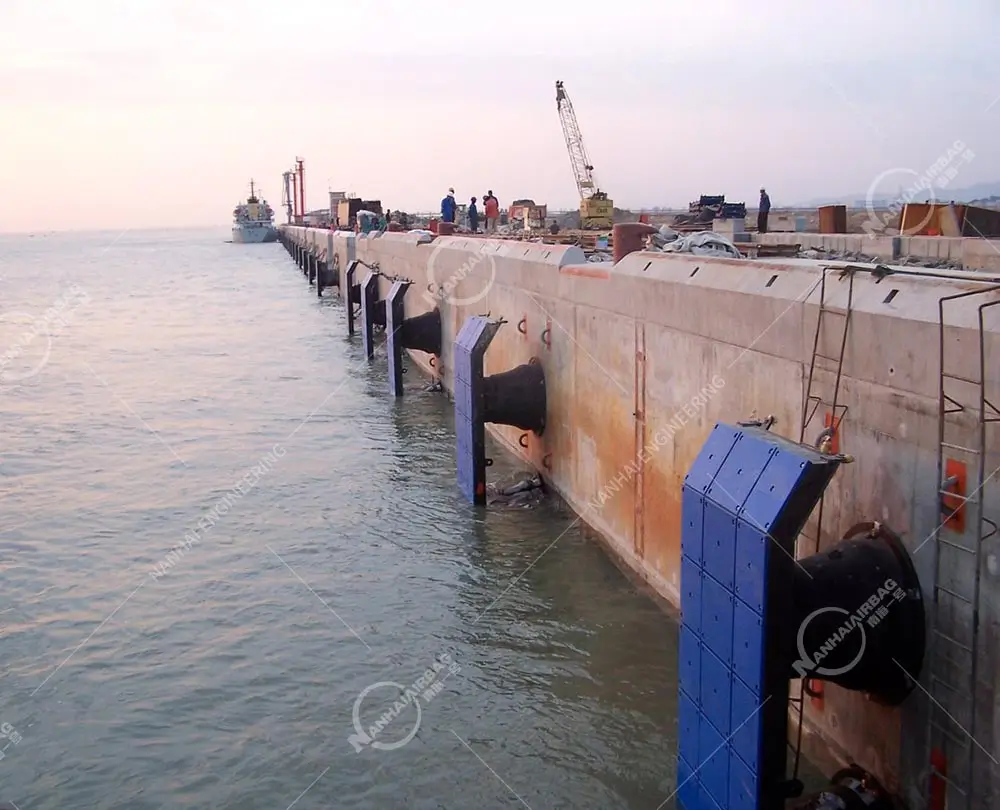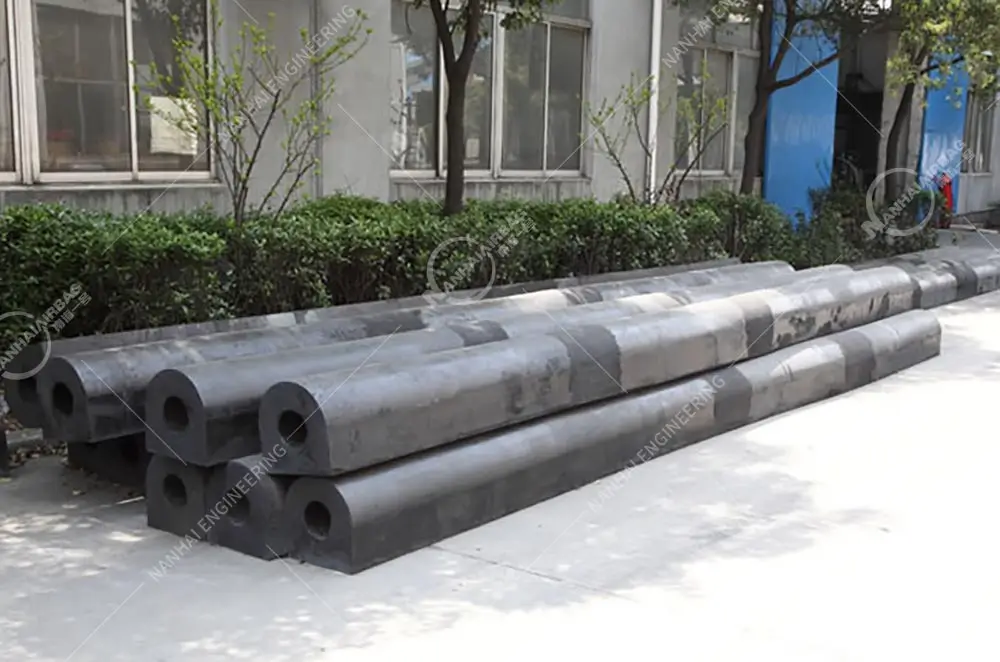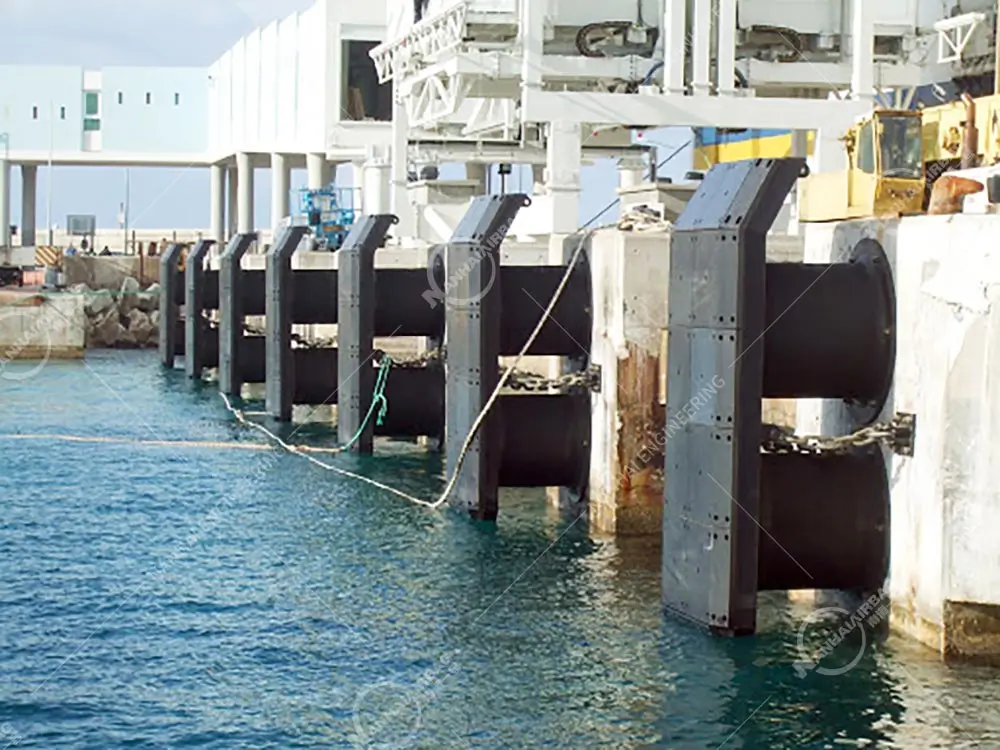Flange Structure Analysis of Pneumatic Rubber Fenders
06/11/2025Application Fields of Marine Airbags
06/12/2025Rubber Fenders: Characteristics and Application Scope
What Are Rubber Fenders?
Rubber fenders, also known as marine fenders or ship fenders, are essential components for maritime safety. They protect vessels and dock structures by absorbing impact energy during berthing or mooring. Without them, both ships and harbor facilities would be at risk of severe damage.
Why Understanding Rubber Fenders Matters
Think of a massive cargo ship slowly docking at a port. Even at low speeds, its size and weight can generate tremendous force. Without a proper fender system, the impact could destroy parts of the dock or damage the hull of the ship. That’s why knowing the right type of marine rubber fenders and their application scope is essential—not just for port engineers, but for shipowners and operators too.
Types of Rubber Fenders and Their Characteristics
There are many types of rubber fenders, each with unique features and use cases. Let’s explore the most common ones:
1) Cylindrical Rubber Fender
Feature: Low reaction force, low surface pressure, and reasonable energy absorption.
Use case: Excellent adaptability to rolling and pitching; suitable for all vessel sizes.
Application: Often used on old piers due to simple installation and easy maintenance.

2) Cone Rubber Fender
Feature: High energy absorption and low reaction force.
Use case: Excellent stress distribution and long service life; maintains performance even under 15° berthing angles.
Application: Ideal for large modern ports; commonly paired with front panels to reduce surface pressure.

3) D-Shaped Rubber Fender (Semi-Circular)
Feature: Moderate reaction force and better energy absorption than cylindrical fenders.
Use case: Compact base width makes it ideal for frame-type wharves and ship-side mounting.
Application: Widely used in smaller docks, yachts, and working boats.

4) DO Type Rubber Fender
Feature: Higher energy-to-reaction ratio than standard D-type fenders.
Use case: Improved durability and installation strength.
Application: Suitable for framed quay structures.

5) Super Cell Rubber Fender
Feature: Low reaction force and large energy absorption.
Use case: Low surface pressure (under 25 t/m²) and minimal performance reduction under angular compression.
Application: Perfect for medium to large-sized berths.

6) Arch (V-Type) Rubber Fender
Feature: High energy absorption and moderate reaction force.
Use case: Firmly installed and easy to replace.
Application: Suits various marine environments, from commercial docks to naval bases.
-fenders-拷贝.webp)
Key Characteristics of Marine Rubber Fenders
- Energy Absorption Efficiency: A primary measure of a fender’s performance.
- Durability and Longevity: High-quality rubber compounds extend operational life.
- Resistance to Harsh Environments: Designed to endure saltwater, UV, and temperature extremes.
- Customizability: Many marine rubber fender manufacturers offer tailored designs based on vessel type and docking conditions.
Application Scope of Rubber Fenders
Rubber fenders are installed in diverse locations across the marine industry:
- Port terminals and harbors
- Ship-to-ship (STS) operations
- Naval facilities and shipyards
- Floating docks and offshore platforms
- Tugboats, ferries, and barges
Each application requires different fender types depending on vessel size, berthing angle, and mooring frequency.
How to Choose the Right Rubber Fender
Choosing the right fender isn’t just about size. Consider these factors:
- Impact energy levels based on vessel displacement
- Berthing speed and angle
- Water depth and tidal range
- Fender spacing and layout
- Manufacturer’s track record and compliance standards
Partnering with reliable marine rubber fender manufacturers ensures quality and safety compliance.
Conclusion: Why Rubber Fenders Are Indispensable
Marine fenders are the frontline defense for ships and port infrastructure. Their design, material quality, and proper selection can prevent expensive damage and ensure smoother operations. Whether you’re operating a commercial port or a private marina, rubber fenders are a long-term investment in safety and efficiency.
Featured Snippets
- Rubber fenders protect ships and docks by absorbing impact energy.
- There are various types of rubber fenders, such as cylindrical, cone, D-type, and V-type.
- Marine rubber fenders are crucial for all types of ports and ship sizes.
- Extruded rubber fenders are ideal for simple applications and ship protection.
People Also Ask (PAA) – Related Questions
- What are the different types of marine rubber fender?
Common types include cylindrical, cone, D-type, DO-type, drum-type, and arch (V-type) fenders. - What is the difference between extruded and molded rubber fenders?
Extruded fenders are produced in continuous lengths and are cost-effective, while molded ones offer more complex shapes and better performance for specific use cases. - How do marine rubber fenders protect ships?
They absorb the kinetic energy during berthing, preventing structural damage to both the vessel and dock. - Which rubber fender is best for large container terminals?
Cone fenders or drum-type fenders are often used due to their high energy absorption and ability to handle large angles. - How long do marine rubber fender typically last?
With proper maintenance and quality materials, fenders can last 10–20 years depending on usage and environment.
